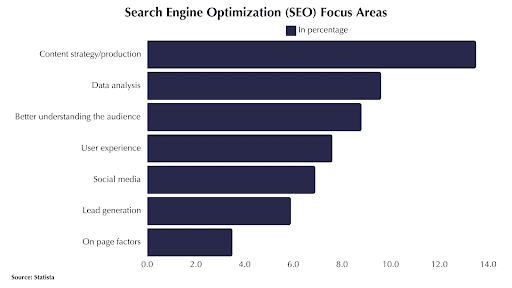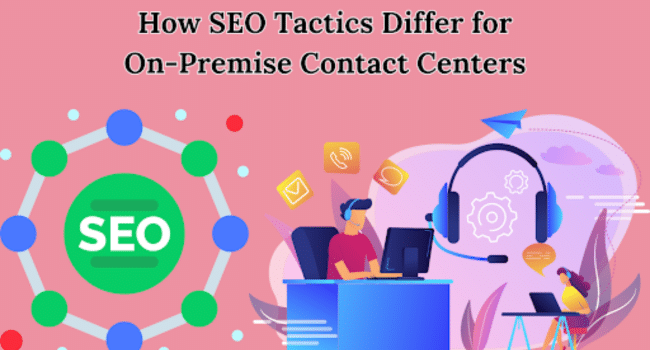Table of Contents
Are you struggling to make your on-premise contact center stand out online? Search Engine Optimization (SEO) can help, but it requires a unique approach for physical contact centers. UUnlike cloud-based solutions, on-premise centers face distinct challenges in attracting potential clients through search engines.
This guide explores effective SEO tactics tailored for on-premise contact centers. You’ll learn how to improve your online visibility, highlight your strengths, and compete effectively against cloud-based alternatives. By the end, you’ll have practical strategies to boost your search rankings and attract more qualified leads.
On-Premise Contact Centers
On-premise contact centers are physical facilities where customer service representatives handle customer interactions. Unlike cloud-based solutions, these centers use hardware and software installed and maintained on-site. They offer direct control over infrastructure, data, and security, making them attractive to organizations with specific compliance requirements or those handling sensitive information.
Understanding modern contact center for on-premise is essential because it impacts the decision-making process regarding infrastructure investment, scalability, and customization options. On-premise centers typically require significant upfront investment in hardware, software licenses, and IT personnel. They offer customization options tailored to an organization’s unique needs.
While on-premise centers may lack the rapid scalability of cloud solutions, they provide stability and predictable costs over time. Large enterprises, government agencies, and industries with strict regulatory requirements often favor on-premise centers. Understanding these characteristics is crucial for developing effective SEO strategies that emphasize the unique advantages of on-premise solutions.
| Aspect | On-Premise Contact Centers | Cloud-Based Contact Centers |
| SEO Focus | Location-specific, security | Flexibility, scalability |
| Keywords | Technical, hardware-related | Cloud, SaaS-related |
| Content Strategy | Case studies, whitepapers | Feature comparisons, pricing |
| Local SEO | Highly important | Less critical |
| Target Audience | Large enterprises, specific industries | Businesses of all sizes |
The Unique SEO Challenges for On-Premise Contact Centers
On-premise contact centers face several unique challenges when it comes to SEO. Many focus on their physical operations and may neglect their digital presence. Their services often involve intricate technical details that can be challenging to explain in SEO-friendly content.
Additionally, on-premise centers may serve specific geographic areas, requiring a more localized SEO approach. They also face stiff competition from cloud-based solutions that often dominate search results. Lastly, the decision to implement an on-premise contact center is often a significant investment, resulting in longer sales cycles that require different SEO strategies.

In this bar chart, we see the primary areas of focus including content creation, keyword research, technical SEO, and more. This data highlights the importance of prioritizing these areas to boost online visibility and competitiveness.
Key SEO Tactics for On-Premise Contact Centers
Focus on Long-Tail Keywords
On-premise contact centers should prioritize long-tail keywords that specifically target their unique offerings. These might include phrases like “on-premise contact center solutions for healthcare” or “secure on-site customer support infrastructure.” By targeting these specific, less competitive keywords, on-premise contact centers can attract more qualified leads who are specifically interested in their services.
Emphasize Security and Compliance
One of the main advantages of on-premise contact centers is the enhanced security and control they offer. Create content that highlights these benefits, using keywords related to data security, compliance regulations, and industry-specific security requirements. This approach not only improves SEO but also addresses key concerns of potential clients.
Develop Location-Specific Landing Pages
If your on-premise contact center serves specific geographic areas, create dedicated landing pages for each location. Optimize these pages with local keywords, address information, and relevant content about your services in that area. This strategy helps improve local SEO and attracts clients looking for on-premise solutions in specific locations.
Create a Comprehensive Comparison of Content
Create in-depth content that compares on-premise contact centers with cloud-based solutions. Use keywords like “on-premise vs. cloud contact center” or “benefits of on-site customer support infrastructure.” This type of content not only improves SEO but also educates potential clients about the advantages of on-premise solutions.
Optimize for Voice Search
As voice search becomes more prevalent, optimize your content for natural language queries. This is particularly important for on-premise contact centers, as decision-makers might use voice search to find information quickly. Include question-based keywords and provide concise answers to common queries about on-premise contact centers.
Content Strategies for On-Premise Contact Centers
Effective content strategies for on-premise contact centers should highlight their unique strengths. Develop detailed case studies showcasing successful implementations, emphasizing industry-specific solutions and measurable outcomes.
Create in-depth technical whitepapers explaining the intricacies of on-premise setups, security measures, and customization options. Produce video content that tours your facilities, demonstrates the technology in action, and explains setup processes.
Maintain a regular blog covering topics like industry trends, customer service best practices, and comparisons between on-premise and cloud solutions. Use your blog to target long-tail keywords and address common customer queries.
Consider creating an FAQ section addressing specific concerns about on-premise solutions. Develop infographics and other visual content to simplify complex information, making it more shareable and SEO-friendly. These diverse content types will improve engagement, establish expertise, and enhance search visibility.
Technical SEO Considerations
Technical SEO is crucial for on-premise contact centers to compete effectively in search results. Ensure your website is fully responsive and mobile-friendly, as many B2B decision-makers use mobile devices for research. Optimize your site’s loading speed by compressing images, leveraging browser caching, and minimizing code.
Implement appropriate URL structures and internal linking to help search engines understand your site’s architecture. Use schema markup to provide context about your services, locations, and customer reviews. Ensure your website uses HTTPS encryption, demonstrating your commitment to security.
Create an XML sitemap and submit it to search engines to ensure all important pages are indexed. Regularly conduct technical SEO audits to identify and fix issues like broken links, duplicate content, or crawl errors. These technical optimizations lay the foundation for your broader SEO efforts.
Link-Building Strategies for On-Premise Contact Centers
Link building for on-premise contact centers requires a targeted approach. Identify industry-specific directories and ensure your business is listed accurately. Seek partnerships with complementary businesses in your industry, exploring opportunities for mutual backlinks.
Contribute guest posts to reputable industry publications and blogs, sharing your expertise on topics related to on-premise solutions. Participate in industry events and conferences, both as an attendee and speaker when possible, to earn backlinks from event websites and industry news coverage.
Create valuable, shareable content like research reports or industry surveys that naturally attract backlinks. Engage in local community initiatives and sponsorships to earn links from local organizations. Consider creating a resources page on your website that links to useful industry tools and information, and reach out to those sources for reciprocal links. Focus on quality over quantity in your link-building efforts to build a strong and relevant backlink profile.
Conclusion
Improving SEO for your on-premise contact center takes time and effort, but it’s worth it. By focusing on your unique strengths, creating targeted content, and optimizing your website, you can attract more potential clients. Remember to track your progress and adjust your strategy as needed. With patience and persistence, you’ll see your online visibility improve, leading to more inquiries and opportunities for your on-premise contact center.
Frequently Asked Questions
How long does it take to see SEO results for an on-premise contact center?
SEO is a long-term strategy. You may start seeing initial improvements in 3-6 months, but significant results typically take 6-12 months or more.
Should I focus on national or local SEO for my on-premise contact center?
It depends on your service area. If you serve specific regions, focus on local SEO. For nationwide services, balance both local and national SEO strategies.
How can I optimize my on-premise contact center’s website for mobile devices?
Use responsive design, optimize images, minimize pop-ups, ensure fast loading times, and make contact information easily accessible on mobile screens.
Read More on KulFiy
Relevance and Search Intent: The Future of SEO
Tips on Choosing the Right SEO Resellers
